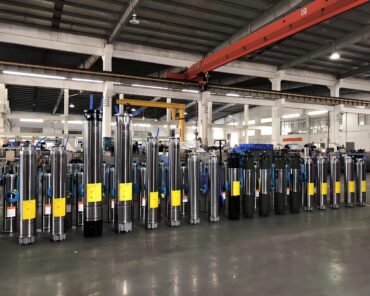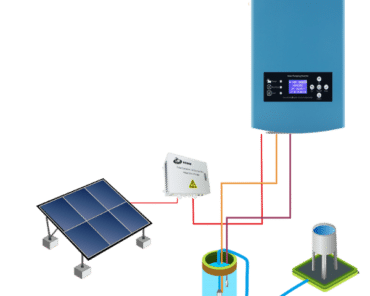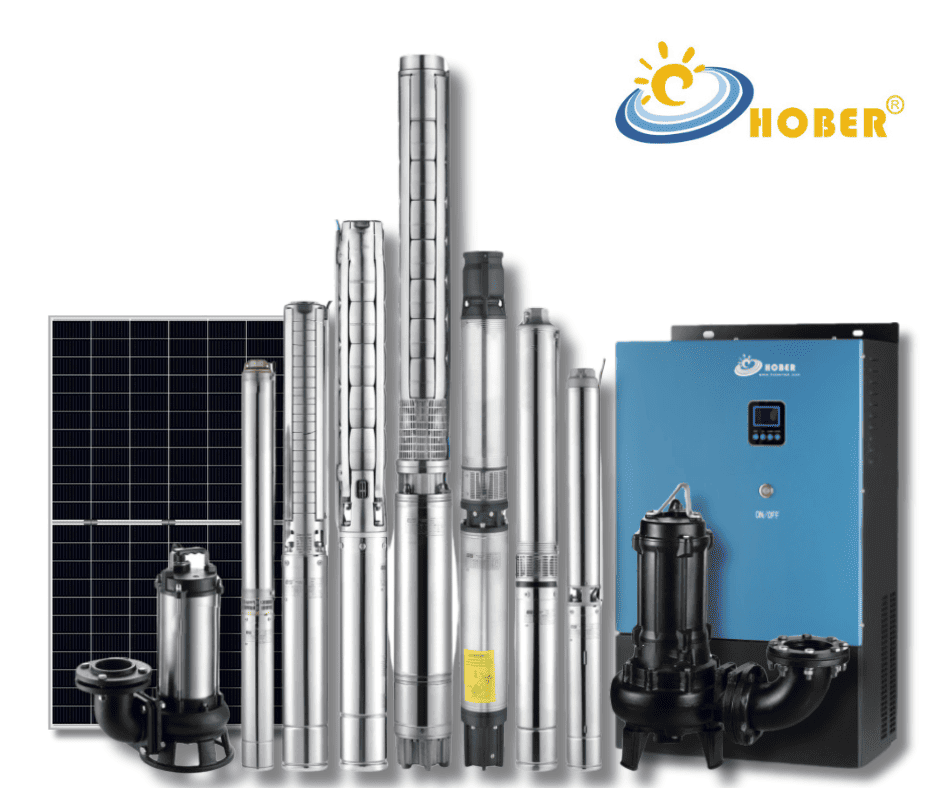If you’re looking to power a pump using solar energy, it’s crucial to understand the difference between a regular VFD and a solar pump VFD. Regular VFDs cannot work efficiently with solar power because they are not equipped to handle the fluctuations in power generated by solar panels. Instead, you need a solar pump VFD with MPPT (Maximum Power Point Tracking) function, which ensures that the system maximizes energy capture and maintains efficient pump performance.
What is a Solar Pump VFD?
A solar pump VFD (Variable Frequency Drive) is designed specifically to work with the variable power output from solar panels. While a standard VFD is used to regulate the speed and performance of pumps in a consistent power environment, it doesn’t account for the fluctuating energy produced by solar systems.
The key feature that makes solar pump VFDs different from standard VFDs is the MPPT function. MPPT ensures that the VFD adjusts to the varying power output from solar panels, optimizing the energy received to maximize pump performance.
Why is MPPT Function Important in Solar Pump VFDs?
MPPT (Maximum Power Point Tracking) is essential in a solar pump VFD because it allows the system to adapt to changes in sunlight throughout the day. As sunlight intensity fluctuates, so does the power output from the solar panels. The MPPT function continuously adjusts the voltage and frequency to ensure the pump is operating at the highest possible efficiency, regardless of weather conditions.
Without the MPPT feature, the pump might not perform optimally in low-light conditions, leading to inefficiencies, reduced water flow, and wasted energy. MPPT helps maintain stable performance, even when solar energy fluctuates.
Can You Use a Standard VFD with Solar Panels?
No, a standard VFD cannot efficiently handle solar power. Standard VFDs are designed for stable power inputs, such as grid electricity, which provides consistent voltage and frequency. Solar panels, on the other hand, generate variable power, especially during cloudy conditions or varying sunlight hours.
Using a standard VFD without the MPPT function for a solar-powered pump system can result in unstable performance and energy loss. That’s why a solar pump VFD with MPPT is the only effective solution for solar-based pumping systems.
What Are the Benefits of a Solar Pump VFD with MPPT?
Using a solar pump VFD with MPPT function offers several key benefits:
- Improved Energy Efficiency: MPPT ensures that the solar power captured is used to its maximum potential. The VFD continuously tracks the best power point, allowing the pump to operate efficiently even when sunlight is inconsistent.
- Cost Savings: Solar power is a renewable and free energy source. By using a solar pump VFD, you can drastically reduce operational costs, especially in remote areas where electricity supply is expensive or unavailable.
- Sustainable and Eco-Friendly: Solar power is a clean, renewable energy source. By switching to a solar pump VFD, you reduce your carbon footprint and promote the use of green energy solutions.
- Reliable Pump Performance: With MPPT, your pump can continue working reliably, even when sunlight conditions are less than ideal. This ensures consistent water flow, which is crucial for applications like irrigation, livestock watering, and remote water supply systems.
How to Choose the Right VFD for Solar-Powered Pumps
When selecting a VFD for your solar pump, it’s essential to ensure that it has MPPT functionality. Solar pump VFDs are specially designed for renewable energy systems, and the MPPT feature is non-negotiable for optimal performance.
- Check Compatibility: Ensure the VFD is compatible with the power output of your solar panels and the specifications of your pump.
- Look for Built-In Protections: High-quality solar pump VFDs often come with protection against over-voltage, under-voltage, and overheating, ensuring long-term durability.
- Consider System Size: Larger solar-powered pump systems may require more advanced VFDs with additional features like remote monitoring and automatic adjustments.
Related Searches on Solar Pump VFDs:
- What is the role of MPPT in solar pump VFDs?
- How to choose a VFD for solar-powered pump systems?
- Solar VFD pump systems for irrigation
- Why do you need MPPT for solar pumps?
Conclusion: Why Solar Pump VFDs are the Best Choice for Solar Energy Systems
When it comes to powering pumps with solar energy, a solar pump VFD with MPPT function is the best choice. Standard VFDs are not equipped to handle the fluctuating power from solar panels, which leads to inefficiency and poor performance. By choosing a solar pump VFD, you ensure that your system maximizes the energy captured from the sun, reduces costs, and provides reliable performance, even in variable weather conditions.
For distributors and installers, offering solar pump VFDs with MPPT provides customers with an energy-efficient, cost-effective, and sustainable solution that can handle the demands of solar-powered pump systems.


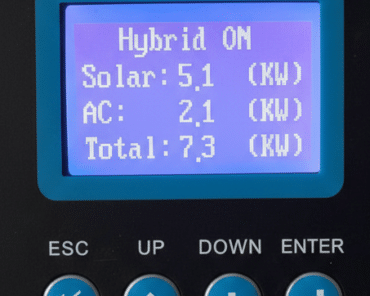
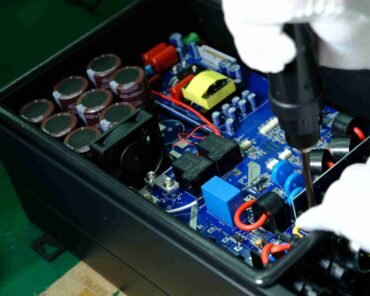
](https://hobertek.com/wp-content/uploads/2025/03/solar-pump-inverter-for-irrigation-efficient-water-pumping-solution-370x296.png)

